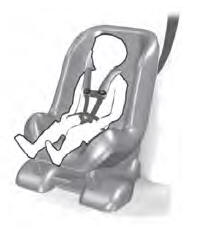Lincoln Aviator 2020-2026 Owners Manual / Starting and Stopping the Engine
Lincoln Aviator: Starting and Stopping the Engine
- General Information
- Keyless Starting
- Starting a Gasoline Engine
- Fast Restart
- Vehicles using Phone as a Key
- Phone as a Key Backup Starting Passcode
- Automatic Engine Shutdown
- Stopping the Engine When Your Vehicle is Stationary
- Stopping the Engine When Your Vehicle is Moving
- Guarding Against Exhaust Fumes. Important Ventilating Information
- Starting a Hybrid Electric Vehicle System
- Fast Restart. Vehicles Using Phone as a Key
- Phone as a Key Backup Starting Passcode
- Automatic Engine Shutdown. Automatic Engine Shutdown Override
- Switching Off Your Vehicle When It Is Stationary
- Switching Off Your Vehicle When It Is Moving
- Guarding Against Exhaust Fumes. Important Ventilating Information
- Engine Block Heater
 General Information
General Information
WARNING: Extended idling at high
engine speeds can produce very high
temperatures in the engine and exhaust
system, creating the risk of fire or other
damage...
Other information:
Lincoln Aviator 2020-2026 Service Manual: Description and Operation - Anti-Lock Brake System (ABS) and Stability Control - Overview
Overview The ABS and stability control systems are comprised of the following subsystems to assist the driver in maintaining control of the vehicle: ABS Curve control Drive away release (EPB) EBD EPB control ESC Hill descent control Hill start assist Hydraulic fade compensation RSC Selectable drive modes Supplemental braking assist Supports adaptive cruise control Supports collision avoidance Traction control Trailer sway control The ABS helps maintain steering control during hard braking by preventing wheel lockup...
Lincoln Aviator 2020-2026 Service Manual: General Procedures - SYNC Module [APIM] Programming
Programming NOTE: If a new APIM is being installed, install the new APIM before carrying out the following procedure. If replacing the APIM do not connect the new APIM to a Wi-Fi network before completing scan tool APIM replacement programming as it may cause programming concerns...
Categories
- Manuals Home
- Lincoln Aviator Owners Manual
- Lincoln Aviator Service Manual
- Fuel Quality
- Interior Lamps
- Configuring The Head Up Display
- New on site
- Most important about car
Child Seats

Use a child restraint (sometimes called an infant carrier, convertible seat, or toddler seat) for infants, toddlers and children weighing 40 lb (18 kg) or less (generally four-years-old or younger).
Using Lap and Shoulder Belts
WARNING: Do not place a rearward facing child restraint in front of an active airbag. Failure to follow this instruction could result in personal injury or death.
Copyright © 2026 www.liaviator2.com

